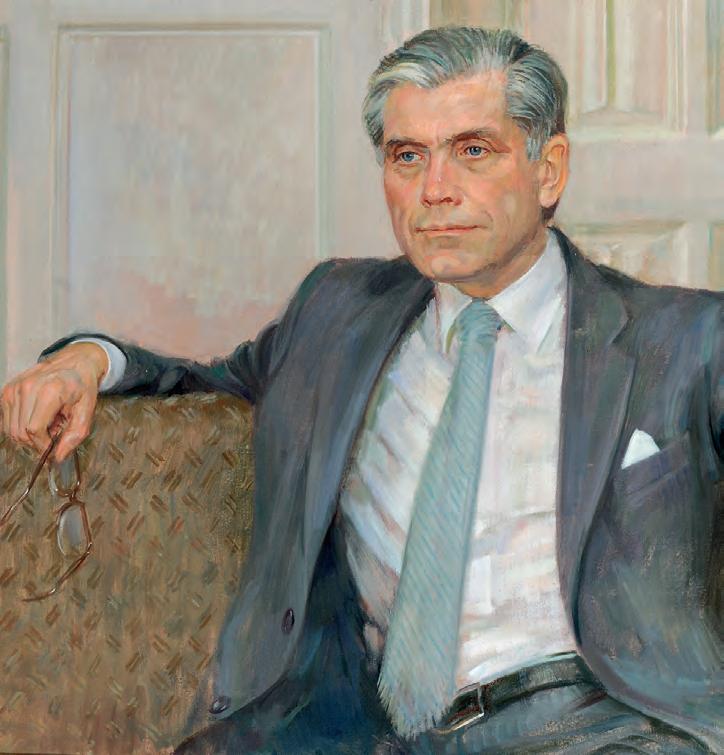OLD PAULINE PROFILES
ABOLITIONIST Clarkson’s Calling
A quiet academic destined for a promising and steady career in the church experiences a Damascene moment when he considers the contents of his winning essay and concludes he has no other choice than to form “a resolution from which he dare not resist”. The history of the abolition of the slave trade is bound in that moment. Close to the docks in Bristol city centre there is a small pub called the Seven Stars – after the constellation better known as The Plough or the Big Dipper – tucked away behind the well-known live music venue, The Fleece. You could easily miss it, but outside there is a blue plaque dedicated to Thomas Clarkson (1775-80) and his objective of collecting first-hand accounts from seamen involved with the slave trade, often found in this and other local hostelries. A short while ago I was inspired to go to Juliet Gilkes Romero’s new play for the RSC at Stratford after reading a review in The Guardian. The play’s double entendre title, The Whip, cleverly conjures both the lash used to drive slaves and simultaneously, the member appointed by a political party to enforce party discipline and to secure the attendance of party members at important sessions. The latter in this case being Alexander Boyd, Chief Whip of the Whig Party at the time the Anti-Slavery Act was passed by Parliament in 1833. The review mentioned the extraordinary fact that the Treasury had announced, by Tweet, just two years ago, that the compensation paid by British taxpayers to slave owners had been finally paid off in 2015. In somewhat flippant prose the tweet announced: “Here’s today’s surprising #FridayFact. Millions of you
22
ATRIUM
SPRING / SUMMER 2020
helped end the slave trade through your taxes. Did you know? In 1833, Britain used £20 million, 40% of its national budget to ‘buy freedom for all slaves in the Empire’. The amount of money borrowed for the Slavery Act was so large that it wasn’t paid off until 2015. Which means that living British citizens helped pay to end the slave trade.” The tweet was roundly attacked and was removed shortly after publication online. So… a pat on the back for us good tax-paying Brits? Romero’s play, enriched with deep research and peopled with characters from all sides of the slavery story, male and female, unveils another not-so-virtuous narrative. There is unfettered greed on the part of slaveowners, including prominent MPs of the day such as Gladstone, bargaining up payback in return for their support of the bill. There are twisted tales of supposed negro naivety and incompetence used to enforce a further seven years of non-paid apprenticeship on the ‘freed’ slaves which rapidly takes the shine off any idea that the compensation signed off slavery at a stroke, or that ‘owners’ got that it was an immoral trade. That it took us a further 182 years to pay off (equivalent to £15billion in today’s money), thereby including taxes paid by descendants of slaves during that time, must have been the Treasury’s closestheld secret till a minion was lost for something to put out as that ‘FridayFact’.
As a Bristolian I am acutely aware that the city’s history has a darker side. Recently, to mark anti-slavery day, an unofficial ‘guerrilla’ art exhibit was laid out at the foot of the statue of Edward Colston, MP, merchant, philanthropist and slave trader, that sits in the city centre, close to the concert hall still bearing his name. 100 ceramic figures were lined up below him to resemble the cargoes of slaves packed into ships en route for the Caribbean and North America. This subversive artwork, the blue plaque at the Seven Stars and Romero’s play conspired to awaken my interest in the life of Thomas Clarkson and what he learned and witnessed in my home town 233 years ago. I probably have little need to remind Old Paulines of Clarkson’s career trajectory. But for those, like me, who may have little detailed knowledge; here are some basics. Clarkson was born on 28th March 1760, the son of Rev John Clarkson who was headmaster of the local free grammar school in Wisbech, Cambridgeshire. Thomas was admitted to St Paul’s in October 1775 at the age of 15. His High Master was Dr Richard Roberts, who had a reputation for “only coming to life when plying the cane”. Clarkson managed to survive or avoid Roberts’








